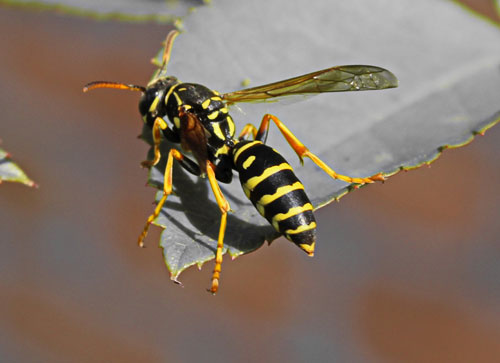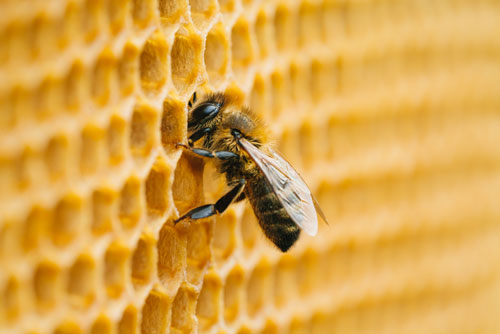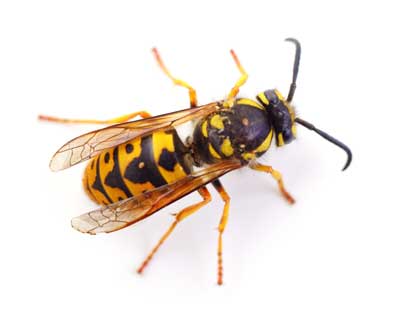How Are Wasps Different from Bees? A Homeowner’s Guide
You’re standing by the bin or tending to the garden when a buzzing insect zips past your ear. How are wasps different from bees? It’s a question many homeowners ask when they spot yellow stripes and quick wings, but knowing the answer can make a real difference. At a glance, these two can look nearly identical, yet understanding the difference helps you avoid stings, protect pollinators, and respond safely to nests around your home.
While bees and wasps both play roles in nature, they behave very differently, and when it comes to your home or garden, knowing which one you’re dealing with can affect everything from your safety to legal responsibilities. This guide will walk you through how wasps are different from bees in appearance, behaviour, nesting habits, and more, so you can respond calmly and correctly if you spot a nest or a stray flyer nearby.
Why It’s Important to Know the Difference
Many homeowners are surprised to learn that misidentifying a wasp as a bee or vice versa can lead to real problems. Bees are legally protected in many parts of Ireland because of their important role in pollinating crops and wild plants. Causing harm to a bee colony, even unintentionally, can result in penalties and contribute to a broader ecological issue. Bees are already under threat, and conservation efforts rely on public awareness and responsible action.
Wasps, in contrast, are not protected and often pose more immediate problems. When they nest close to homes, sheds, or communal spaces, they can become territorial and aggressive. This becomes important when dealing with nests in high-risk spots like vents, chimneys, or eaves. In many cases, professional wasp nest removal is required to safely address the issue.
Unlike bees, wasps can sting repeatedly without dying, and they are far more likely to attack when they feel threatened, particularly in late summer during the wasp breeding season. Not knowing which insect you’re dealing with might lead you to harm a valuable pollinator unnecessarily or ignore a dangerous infestation, risking stings or allergic reactions.
How Are Wasps Different from Bees in Appearance?
One of the first ways to tell the two apart is by their body shape and colouring. Wasps tend to look smooth and shiny, with a narrow waist and a sleek, streamlined body. Their yellow-and-black stripes are typically bold and vivid. Bees, on the other hand, are rounder and covered in soft hairs, which gives them a fuzzier appearance. Their colours are more muted, with amber or brownish tones.


You might also notice differences in how they fly. Wasps move quickly and directly, folding their wings tightly when resting. They jump between locations and often appear focused. Bees have a heavier, more deliberate flight, often hovering around flowers. They tend to move more slowly due to their pollen loads and broader wings.
Seasonal size changes can help too. Early in the year, queen wasps emerge and are noticeably larger than the worker wasps seen in late summer. Worker bees are about the same size as worker wasps, though their fluffy build makes them seem bulkier. A close look reveals sharper head shapes and longer, dangling legs on wasps, while bees appear rounder, with tucked-in limbs and pollen baskets.
How Do Their Behaviours Differ?
If you’re wondering how to differentiate bees and wasps, watching their behaviour can be incredibly helpful. Bees are gentle foragers focused on pollen and nectar. They rarely sting and only do so if directly provoked. In contrast, wasps are defensive and far more aggressive. They sting readily and can do so multiple times without dying, making them hazardous when nesting close to people.
Their food preferences also set them apart. Bees are drawn to flowering plants and bloom-heavy gardens. They move methodically from flower to flower and are rarely found near bins or leftovers. Wasps behave differently, particularly as summer progresses. Their scavenging habits make them regular visitors to bins, barbecues, and any area with sugary drinks or rotting fruit. In fact, it’s this behaviour that often leads to wasp nest in garden complaints during the warmer months.
Another behavioural clue is location. Bees typically stick to floral environments and avoid strong food smells. Wasps turn up in places bees wouldn’t go, like wasp nest in vent systems or under eaves. They are more likely to build nests in or around human structures and don’t hesitate to invade shared outdoor spaces.
Where Do Bees and Wasps Build Their Nests?
If you’re still wondering how are wasps different from bees, looking at their nests can often give you the clearest answer. The structure, material, and location of the nest all reveal which insect you’re dealing with. Wasps build grey, papery nests by chewing wood and mixing it with saliva. These nests are often umbrella-shaped or spherical, with visible surface patterns and a single entry point. You might spot them in tree branches, under roof edges, or tucked inside sheds and wasp nest in attic spaces.
Bees prefer enclosed, hidden spaces. Their nests are made of wax and form intricate honeycomb patterns. You’re more likely to find them in wall cavities, hollow trees, or old chimneys. Bees come and go quietly, and their hives are designed for long-term use, unlike wasps, which abandon their nests by winter.
When it comes to removing nests, the approach varies dramatically. Wasp nests often require chemical treatment and safe removal by trained technicians. Bees, however, should never be exterminated. If you discover a colony, your best option is to call a local beekeeper or request natural wasp removal services, especially if you’re unsure what you’re dealing with.
So, How Are Wasps Different from Bees?
The short answer is: in almost every way. Wasps are slimmer, shinier, and more aggressive. They thrive in areas where food waste is common and build exposed paper nests that can appear in or around your home. Bees are vital, gentle pollinators with fuzzy bodies and a preference for plants and privacy. Their hives are hidden and long-lasting, and their role in nature is irreplaceable.
Recognising these differences helps prevent accidental harm to bees and reduces your risk of a painful encounter with wasps. Whether you’ve noticed increased wasp traffic near your bins or are dealing with a suspected wasp nest in chimney, knowing what you’re dealing with allows you to respond correctly and safely.
Get Help with Identification or Nest Removal
If you’re still unsure how are wasps different from bees or whether the nest on your property poses a risk, don’t take any chances. Our team can help you quickly identify the species and provide safe, effective solutions tailored to your situation. For wasps, we offer full-service wasp nest removal across Ireland. If bees are involved, we’ll guide you through responsible next steps that protect both your family and the local environment.
Call us on 087 254 2839 to book an inspection. Whether it’s a wasp nest under the decking or a buzzing hive in your chimney, we’re here to help you deal with it the right way.
